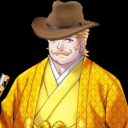Vibora Bay

Vibora Bay is a city on Florida’s Gulf Coast, tucked away between Choctawhatchee Bay and West Bay on the Florida Panhandle, known for its unique mix of cultures and peoples. It’s the largest city in Florida, with perhaps eight hundred thousand people in the city proper and more than a million and a half in the greater Walton County area. The waters of the Gulf are shallow and warm here, and millions of tourists come every year to swim in the blue-green waters or bask on the “whitest beaches in the world.” Like much of the South, the city has an uneasy relationship with its past - at once protecting much of its traditional heritage while embracing the future as best it can. In many ways it’s a city of the past as much as a city of the future - and very much torn between the two.
Generally speaking, Vibora Bay is split into three districts: the working-class Weston District, the High Street District (a major six-lane highway which roughly splits the metropolitan area down the middle) and the upscale Easton District. There are many, many smaller neighborhoods - but looking at the districts will give you the broad strokes.
The Weston District is a working-class area that’s one of the historic heartlands of African-American, Hispanic, and immigrant culture in this part of the United States - or it’s “the wrong side of the tracks”, a less-developed, less-maintained, crime-ridden district that’s only begun to gentrify in the last few years. It all depends on who you ask. Weston has colonial history too, dating back to a free black community built here in the 1730s, and it was where freedmen and women first began carving out homes for themselves in the late 1860s. Weston is home of Vibora Bay’s International Airport, the historically black University of Florida Vibora Bay, and one of the largest Haitian immigrant communities in this part of the United States - it’s also home of the city’s favorite “plucky underdogs” - the Hammerheads, Vibora’s native NFL team and one of the lowest-ranked in the NFL. Having taken in many Katrina refugees, Weston has grown significantly in the last fifteen years.
The High Street District embodies the past and future of Vibora Bay perhaps more than any other part of the city. It’s the home of Old Town or “the Tangles”, a carefully curated collection of alleys and twisty cobblestone lanes preserved from development by sheer force of will (and desire for the dollars of tourists looking for the ‘authentic’ local experience) that’s primarily home to obscure shops of all kinds. Old Town does indeed date back to Vibora Bay’s Spanish colonial history, and it’s the best place in the Panhandle to do historic recreation. High Street’s also home to the touristy Waterfront (as opposed to the working piers to its west and east) and the towering skyscrapers of the Financial District. (The tallest, the 50-story South Building, is the highest building in Florida outside of Miami.)
The Easton District is the “right side of the tracks”, where the city’s wealth and power is the most concentrated. It’s home to City Hall and the art scene at the Duval Theater, as well as the ACI Forums that hosts the Vibora Bay Copperheads, the city’s championship-winning NBA team. The Forum has just reopened for business in the fall of 2019 after being heavily damaged by Hurricane Michael, but fans are sure the Copperheads (who have been training on U of F Vibora bay’s campus) deserve a win. You can find old money at Cluet Farms, new money in the downtown of Inner Easton, and the brawling, booming working port of Easton Shore. Easton is a bit older, a bit more conservative, and a bit less diverse than the rest of the city. Easton was hit hard by Hurricane Michael, leading to some outmigration, so the region (like the city itself) has recently been in flux. In particular, various underworld figures have taken the opportunity to buy affordable real estate in upscale neighborhoods.

Life in Vibora Bay
Some people say Vibora Bay is like a cross between New Orleans and Miami - but of course any Viboran (“v’BOR-uhn”) would firmly tell you that no, New Orleans and Miami are like inferior copies of “The Queen City.” It’s a city where the most common greeting on the street is “How are you doing?” and where people take things slow. (Mutterings about “Vibora Time” are pretty common from people outside of the area.) Though there are certainly chain restaurants and other big-box stores in Vibora Bay, there aren’t nearly as many as you’d expect for a city this size - offering something unique from the homogeneity of America’s largest cities has long been at the heart of Vibora’s culture. It’s balanced between the Old South and the New - and good at selling both to outsiders.
In October of 2018, Vibora Bay was hammered by Hurricane Michael, a Category 4 storm that was the single most destructive storm in the city’s history. More than a hundred people died and the once-bustling port of Easton Shore and the previously upscale neighborhood of Far Easton were devastated by the storm. Prompt action by the Cahill administration has allowed most Far Easton residents to return to their homes, however, and the businesses of Easton Shore to reopen - albeit many of them under new management. Both the Vibora Bay Zoo and elite liberal arts institution Sinclair University were able to fully reopen by the summer of 2019. Cahill’s prompt action in dealing with Michael (as well as his administration’s rapid response to Maria a year before) is widely seen as one of the high points of his administration.
Local Baddies and Superhero Culture:
Vibora Bay has a long tradition of superheroing, going all the way back to the dapper magician Max Pendragon in the 1930s. Its current defenders include Weston’s Brother Thunder and Sister Rain (who both debuted in 2005 just after Katrina) and the somewhat better known Black Mask X and Brother Ka who appeared together (battling the forces of the Serpent People) in 2009. The city’s most powerful defenders are probably the Atlantean-raised “eco-hero” Amphibian and the semi-active Siren II, the long-time Freedom League member who relocated to Vibora in the wake of Michael.
The aftermath of Michael means that crime is on the rise in Vibora - whether the mundane crime dominated by bosses like the Sweetland Family, gangs like the Sovereign Sons and the Krewe, mystic threats like the cult of the Mayombe, the Crossroads Conflict between the loa, or costumed criminals like Poison Pen and the Sneak. Between a mystic war between the gods and conflict over who controls the city’s drug trade, there’s plenty for a new generation of heroes to do here.
Having said that, Vibora has few resident supervillains for a city its size, but it does have a big problem with “snowbirds” - super-criminals who come south to Vibora Bay for the good climate in the winter and who take the opportunity to do a little crime on the side. This is one reason why Vibora Bay recently passed a municipal defender law, making it one of several cities in Florida with similar legislation. (The city doesn’t yet have a full-time municipal defender; Brother Thunder and Sister Rain see their mission as more local in nature, Amphibian has political objections to the idea, Black Mask X doesn’t want to risk her secret identity, and Siren prefers to remain independent.)
Municipal Defenders:
Municipal defenders are a legal institution rare in the United States - and even more rarely implemented. (Vibora Bay, Cleveland, Ohio, and Sunnyvale, California are the largest cities with municipal defender laws.) Municipal defenders are superheroes who work directly for a local government, acting as both spokesman and champion. There are many benefits to working as a defender: the pay and benefits are generally quite good, as is the near-guaranteed support of city officials. There are disadvantages as well: the loss of privacy (at least to a city bureaucrat) and the constraints on one’s professional and personal time. It’s not illegal to be an “independent” hero in a city like Vibora Bay - but such heroes find the authorities less than cooperative, and the public a bit suspicious about what this masked person has to hide.

Thematic Notes:
If you like the comics of Steve Gerber or James Robinson, if you like Swamp Thing and the Jack Knight Starman, Vibora Bay is right for you. It’s a stormy Southern Gothic metropolis, where the gumbo is as spicy as the music, a tourist mecca with a history at once glorious and terrible. Think Opal City with a soupcon of New Orleans.
Note:
We strongly encourage players to purchase the Vibora Bay book, available in hardcopy through Amazon or online through Drivethrurpg, depending on your preference. Players using the Vibora Bay book should add 15 years to all dates not directly tied to historic events - for example, Mayor Richenda Barker was born in 1969 and has been mayor of Vibora Bay since 2015.
Edited by Avenger Assembled


